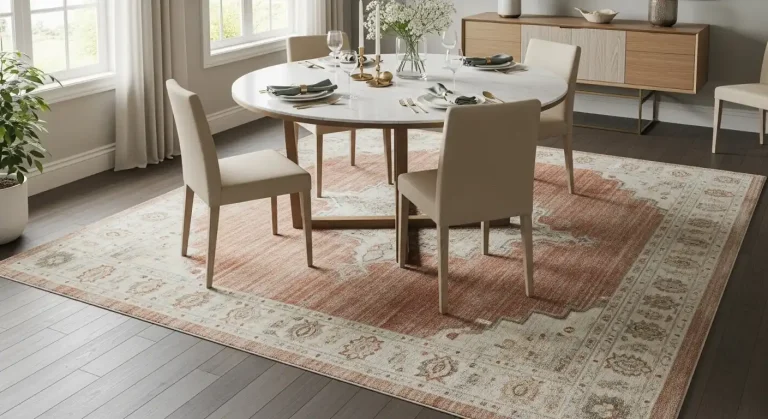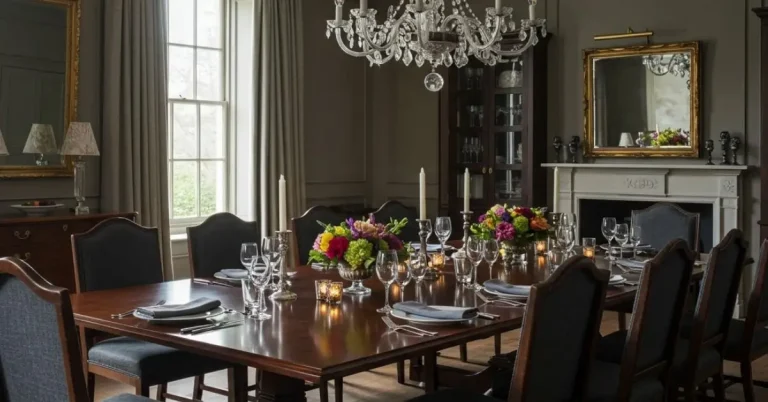17 Apartment Dining Room Ideas for Stylish and Functional Small Spaces
Looking for smart and stylish apartment dining room ideas? Discover creative ways to make the most of your small dining space!
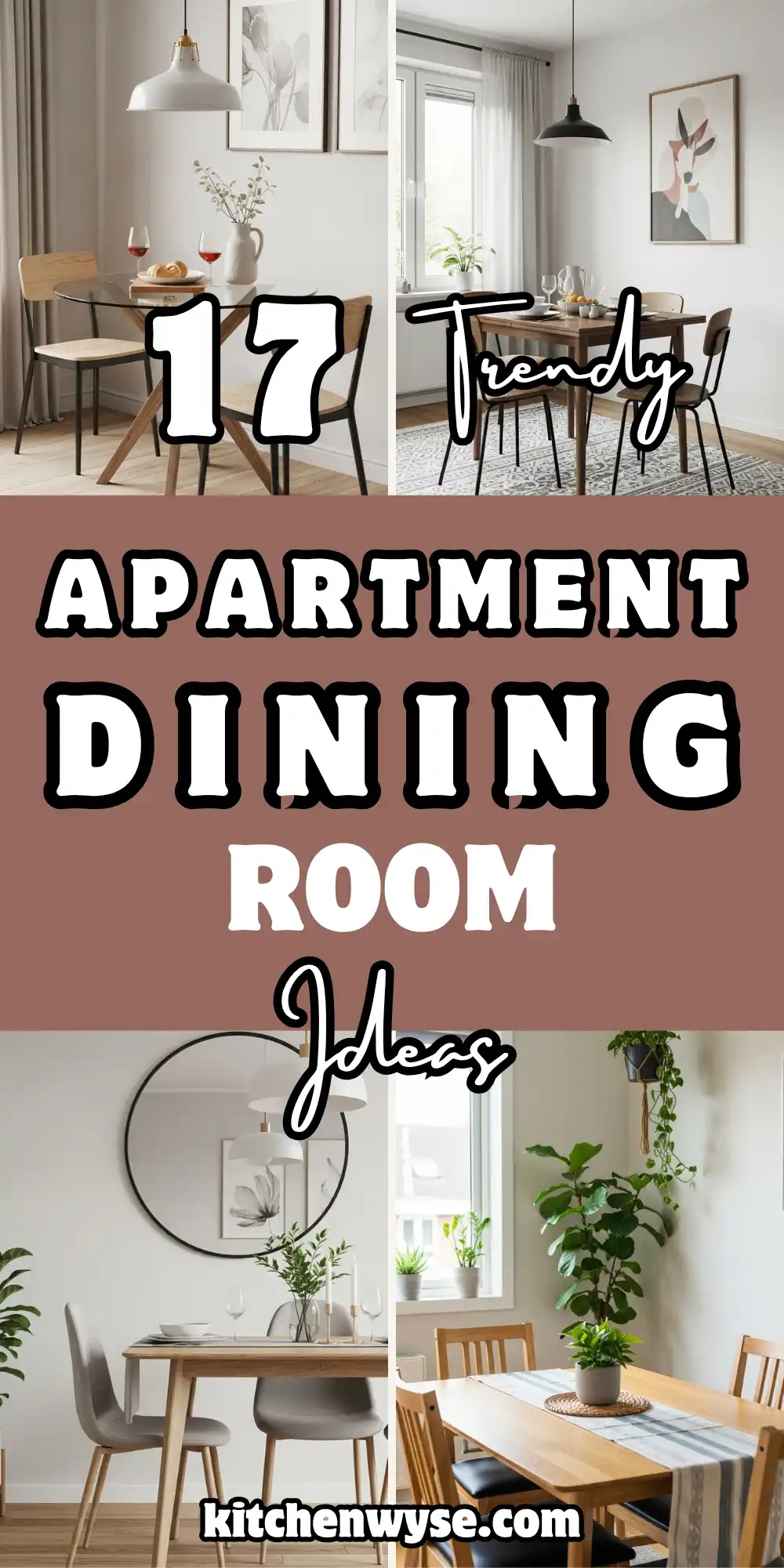
A small apartment doesn’t mean you have to give up on having a beautiful dining area.
In fact, with the right approach, even the tiniest space can be transformed into a cozy and stylish spot for meals, gatherings, or even working from home.
The key is smart design, thoughtful furniture choices, and a few clever styling tricks.
Christmas & Year-End Deals On Amazon !
Don’t miss out on the best discounts and top-rated products available right now!
*As an Amazon Associate, I earn from qualifying purchases.
17 Apartment Dining Room Ideas
To help you get started, we’ve rounded up 17 apartment dining room ideas for stylish and functional small spaces.
Whether you prefer a minimalist aesthetic, modern vibes, or a warm and inviting look, these tips will show you how to create a dining space that’s both practical and full of charm.
1) Use a round pedestal table to save space and add elegance

I love using a round pedestal table in my apartment.
It really saves space since its single column base takes up less floor area than those clunky traditional legs.
Plus, the round shape adds a little elegance I honestly didn’t expect.
It just feels cozier and more inviting—perfect for a small place like mine.
2) Incorporate upholstered chairs for comfort and style
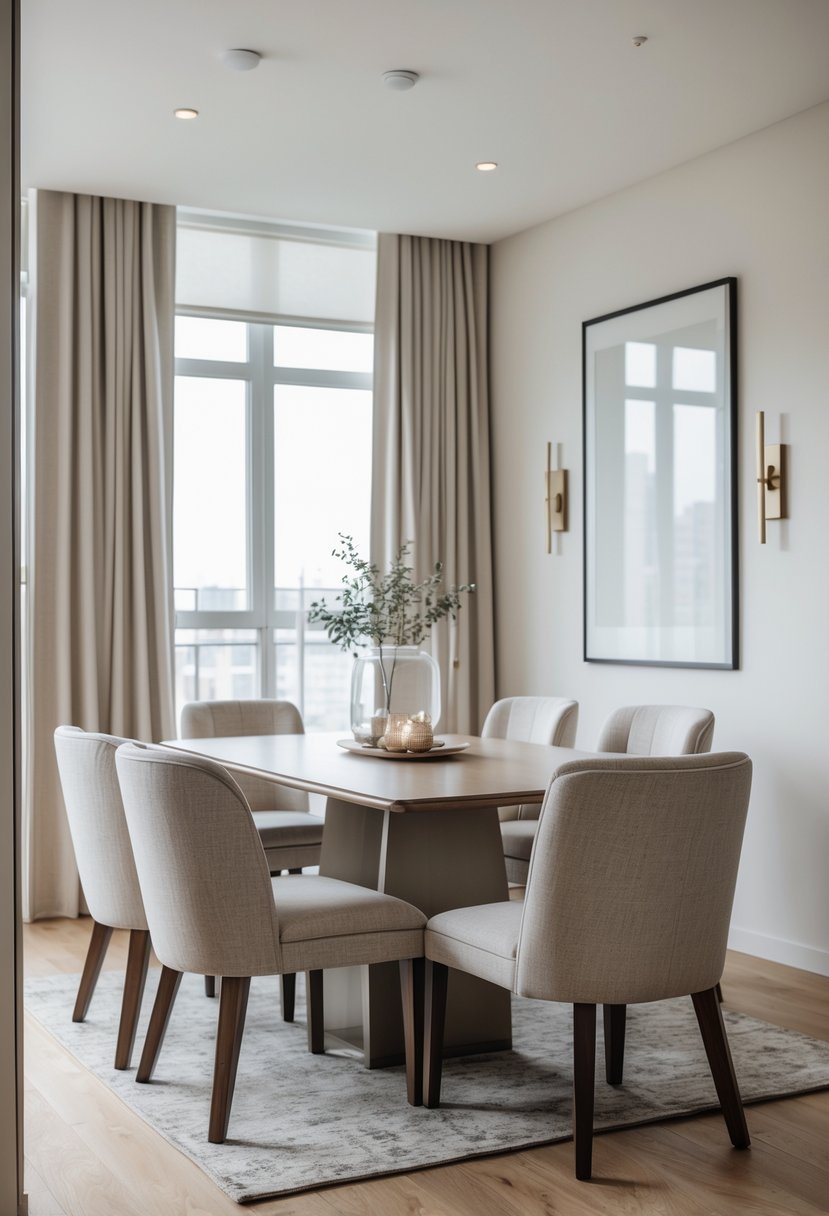
Upholstered chairs bring comfort and a little extra style to a small dining space.
Sitting for long meals just feels better with some padding.
I usually go for fabric or velvet because they make things feel warm and welcoming.
And with all the color options, it’s actually fun to match them with my apartment’s vibe.
3) Add a sleek sideboard for extra storage and display
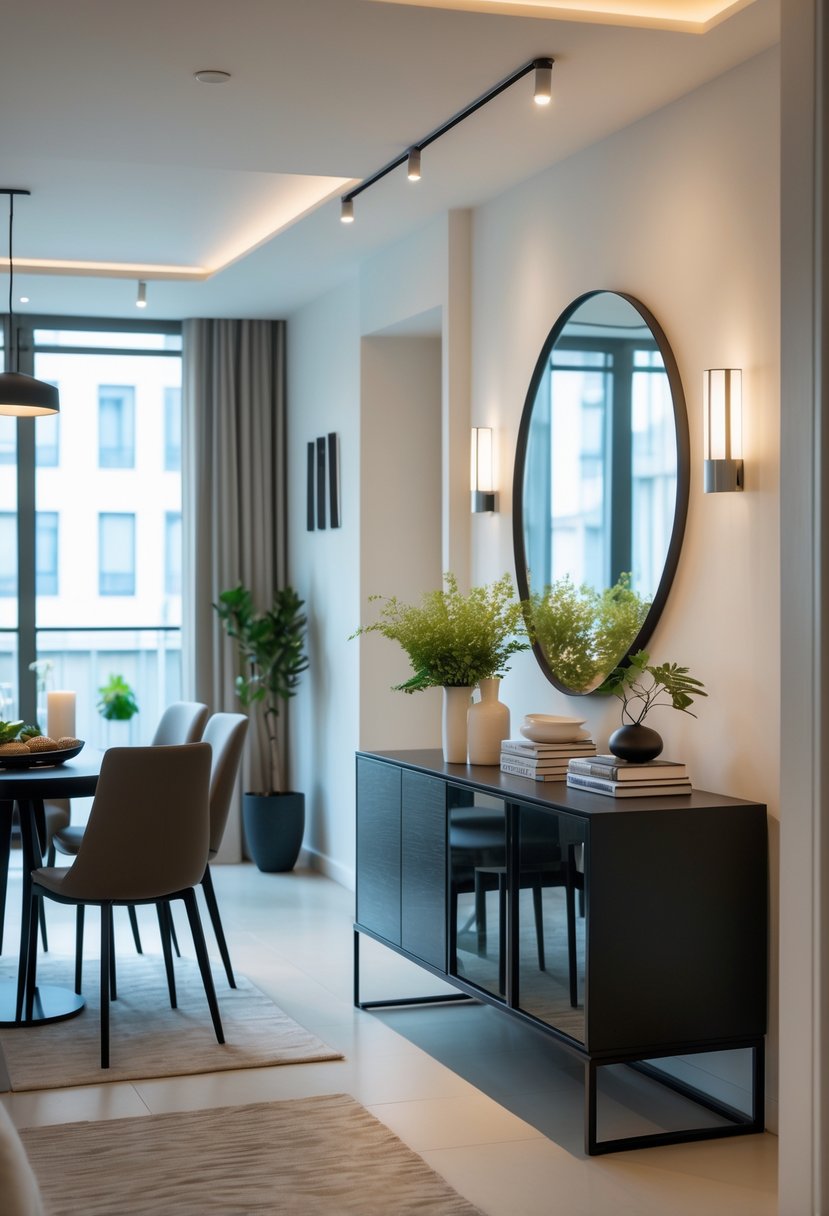
Adding a sleek sideboard instantly boosts both style and storage in my dining area.
I stash dinnerware and linens inside, so everything stays organized and out of sight.
The top’s perfect for a plant or a vase—just enough to keep things interesting without clutter.
In a small apartment, I think a sideboard’s kind of a must because it mixes storage with good looks.
Christmas & Year-End Deals On Amazon !
Don’t miss out on the best discounts and top-rated products available right now!
*As an Amazon Associate, I earn from qualifying purchases.
4) Create a corner nook dining area in the kitchen

Turning a kitchen corner into a dining nook just makes sense to me.
A built-in bench or banquette fits tight spaces and frees up the rest of the room.
I toss in a small table and a couple of chairs, and suddenly I’ve got a cozy, practical spot.
If I use matching colors and simple decor, the nook blends right in with the kitchen—no weird transitions.
5) Use multi-functional furniture for small spaces
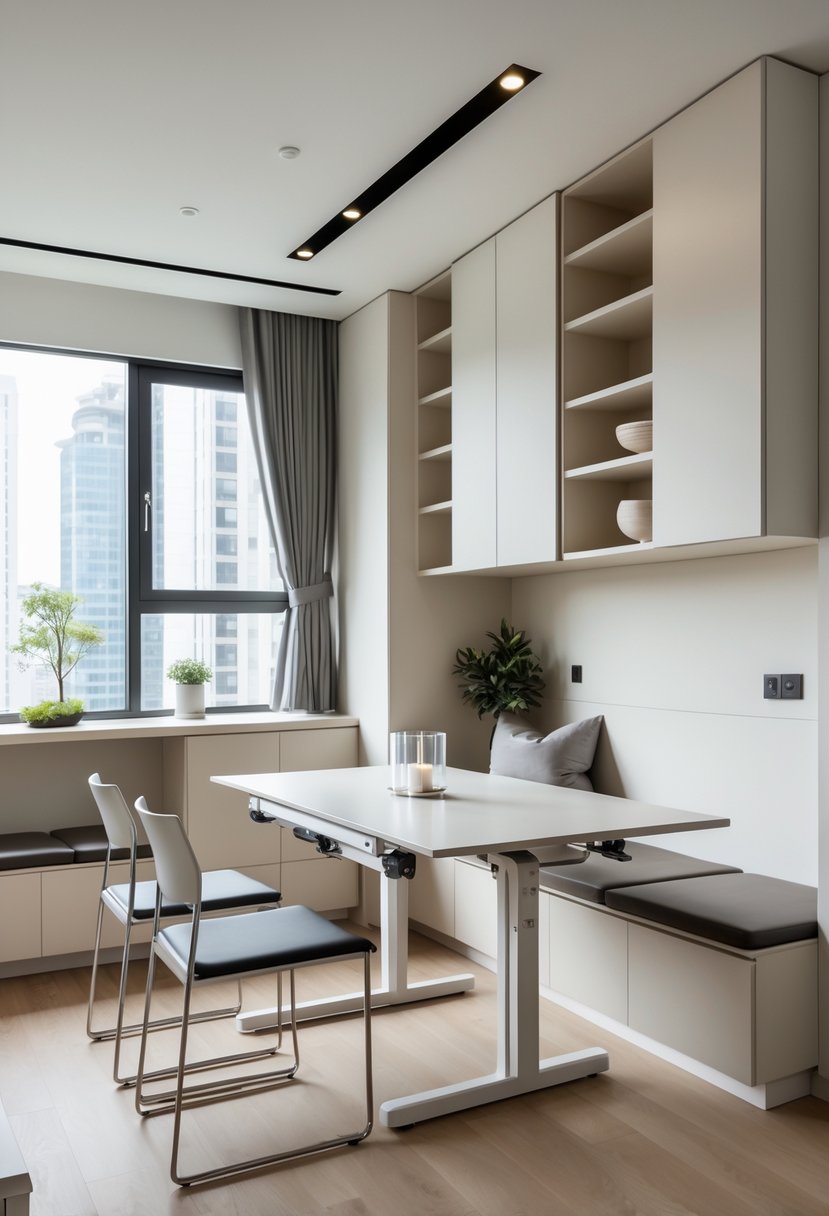
Multi-functional furniture is honestly a lifesaver in tiny apartments.
Tables that double as desks or benches with hidden storage help me keep things under control.
When I pick pieces that serve more than one purpose, my dining area stays organized and useful.
I can eat, work, or just hang out—all in the same spot, without feeling cramped.
6) Install striking light fixtures to enhance ambiance
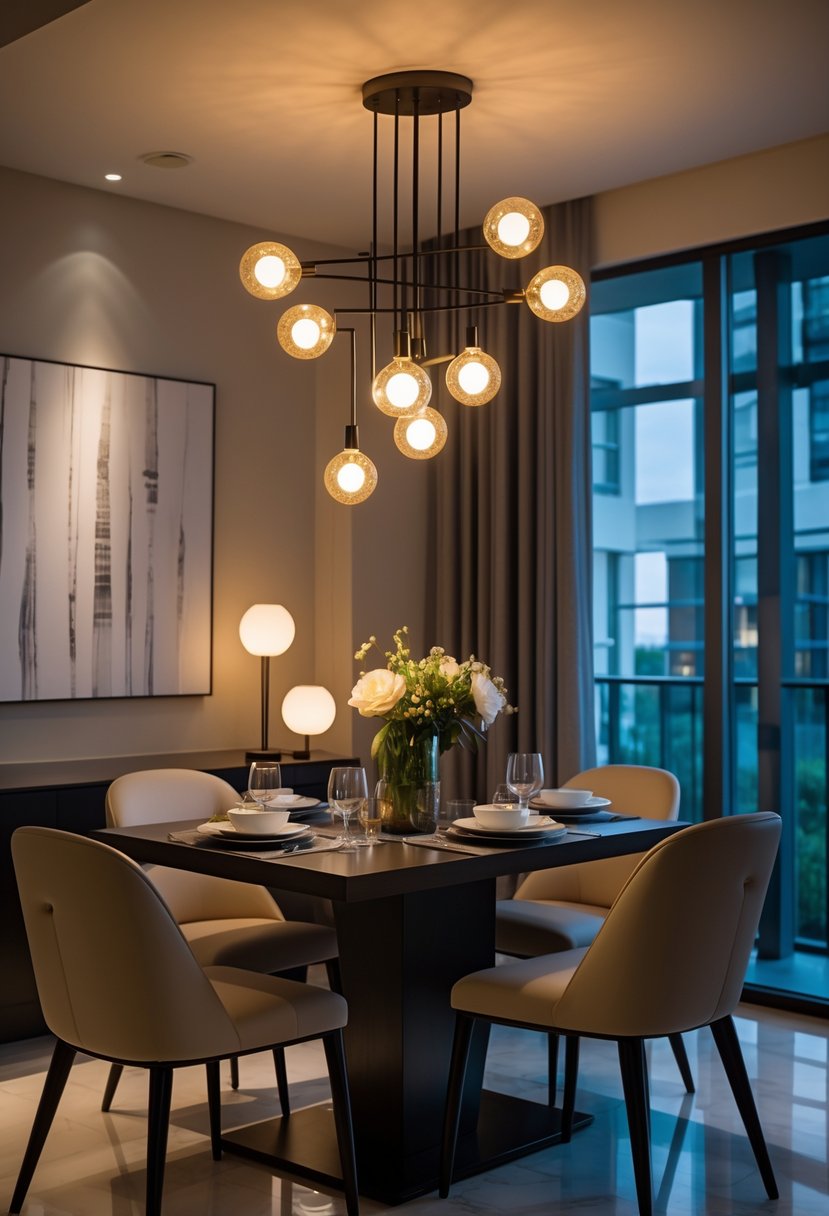
Lighting changes everything, doesn’t it?
A cool pendant or chandelier draws the eye and gives the space a bit of personality.
I like picking fixtures that actually fit the room’s size.
Adjustable or modern lights work best for apartments, in my experience—they’re functional and look great.
Christmas & Year-End Deals On Amazon !
Don’t miss out on the best discounts and top-rated products available right now!
*As an Amazon Associate, I earn from qualifying purchases.
The right lighting just makes meals feel special.
7) Balance traditional and modern design elements
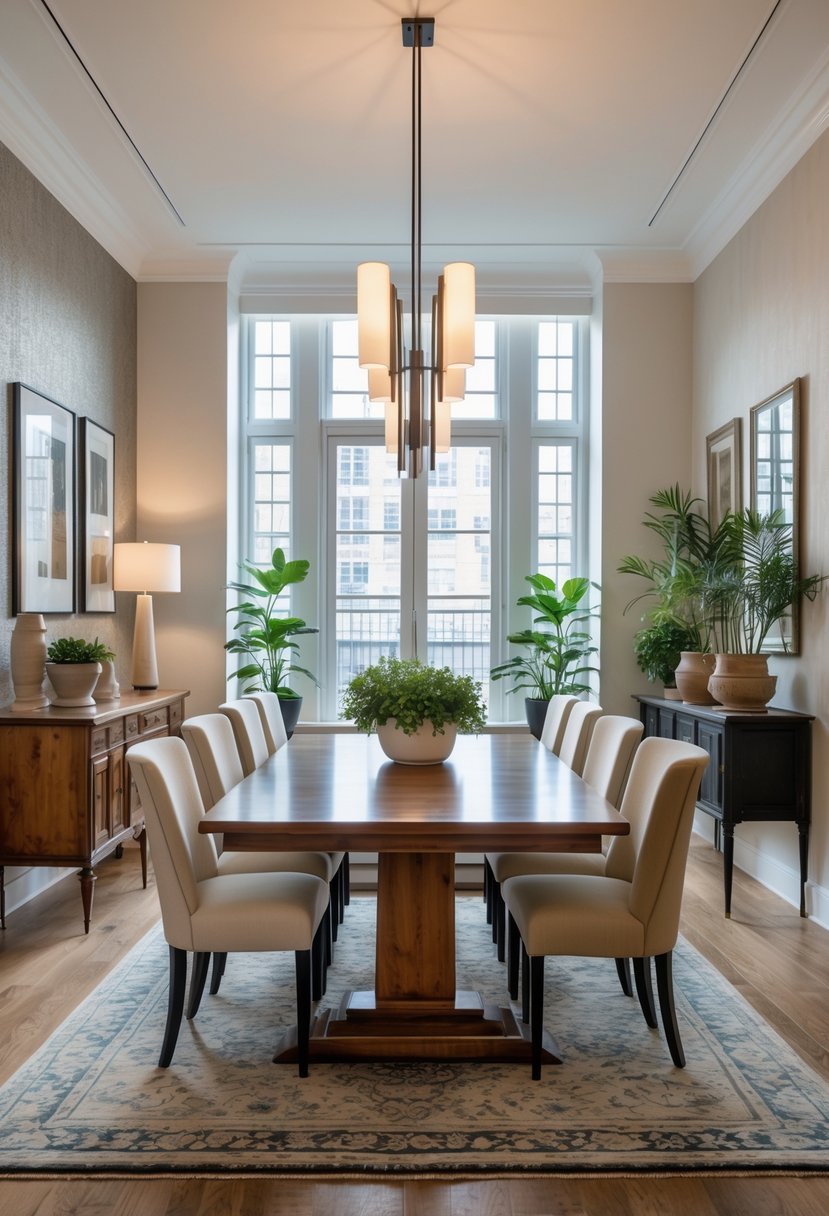
I love mixing traditional and modern pieces for a more balanced vibe.
Pairing a classic wooden table with sleek chairs? That contrast just works, and nothing feels out of place.
Vintage light fixtures bring in warmth, while modern decor keeps things looking fresh.
This combo really comes alive in small apartments, honestly.
8) Add a Statement Rug to Define the Dining Area
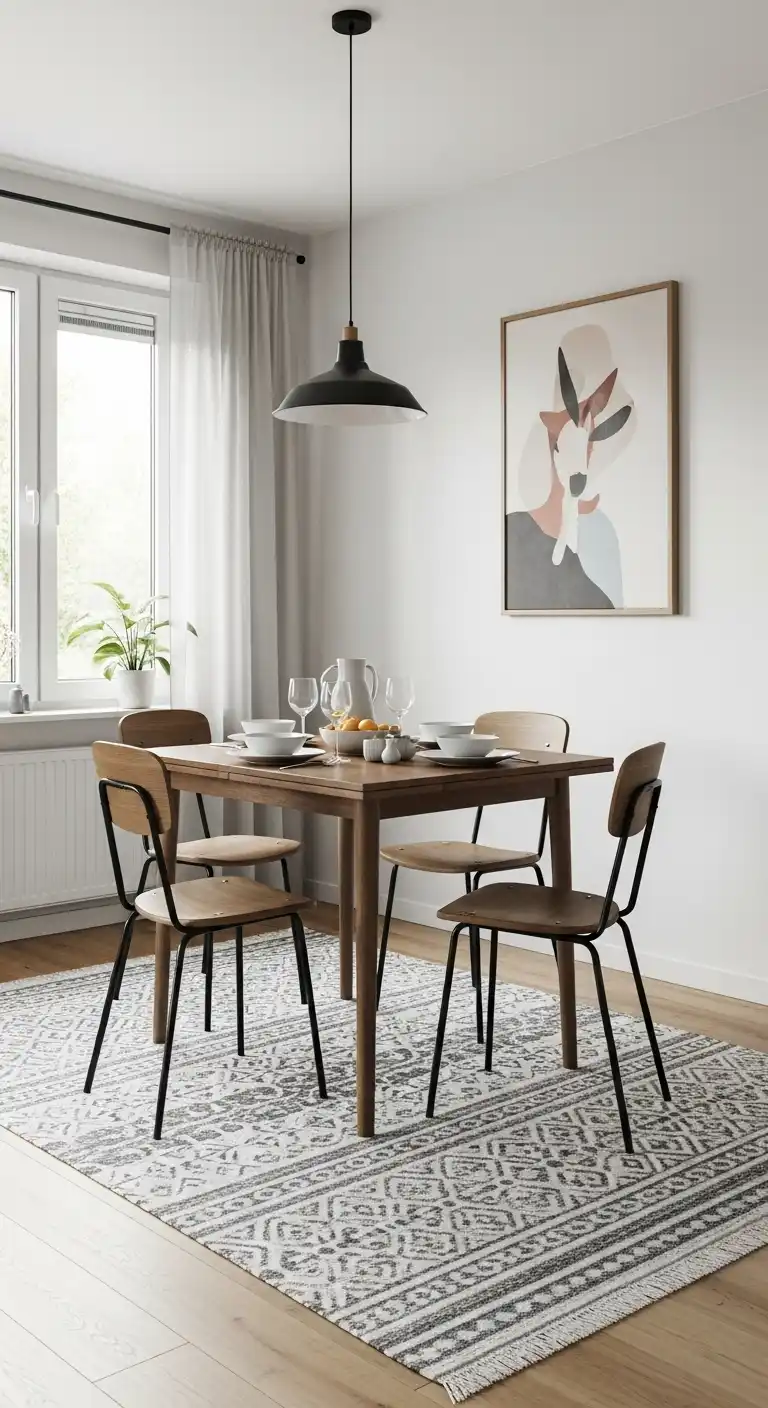
A patterned rug under a small dining table instantly defines the space, especially in an open-plan apartment.
I like choosing rugs with subtle tones or textures—they anchor the table while adding warmth.
Bonus points if the rug is easy to clean (because spills happen).
It’s such a simple trick, but it makes the dining corner feel intentional and cozy, like its own little zone within the apartment.
9) Hang a Large Mirror to Open Up the Room
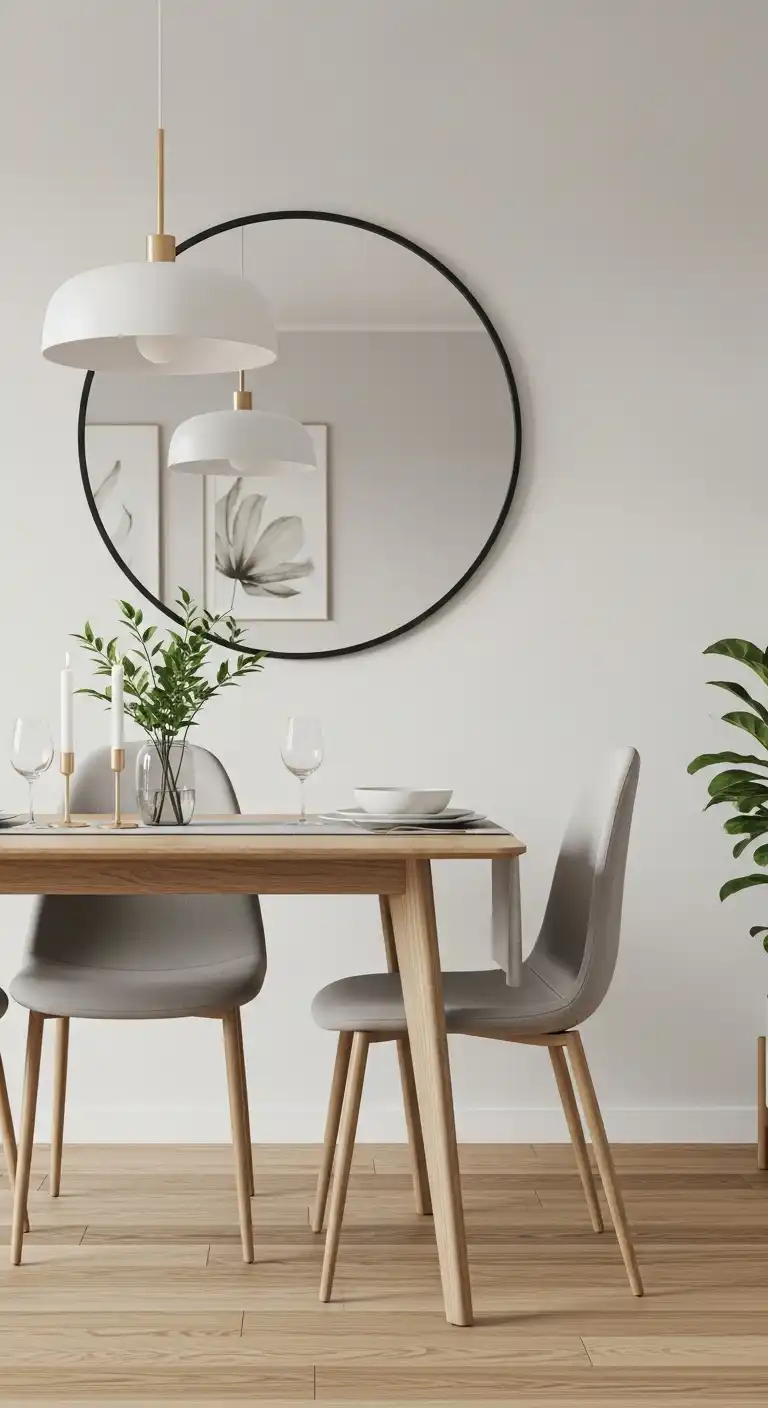
Mirrors are my secret weapon for small dining spaces.
Hanging one near the dining table reflects light and makes the whole room feel twice as big.
I like round or oversized mirrors because they double as decor and add a modern touch.
Christmas & Year-End Deals On Amazon !
Don’t miss out on the best discounts and top-rated products available right now!
*As an Amazon Associate, I earn from qualifying purchases.
Sometimes I place a plant in front of it for that extra pop of greenery—it’s like free decor magic.
10) Use Wall-Mounted Shelves for Storage and Decor
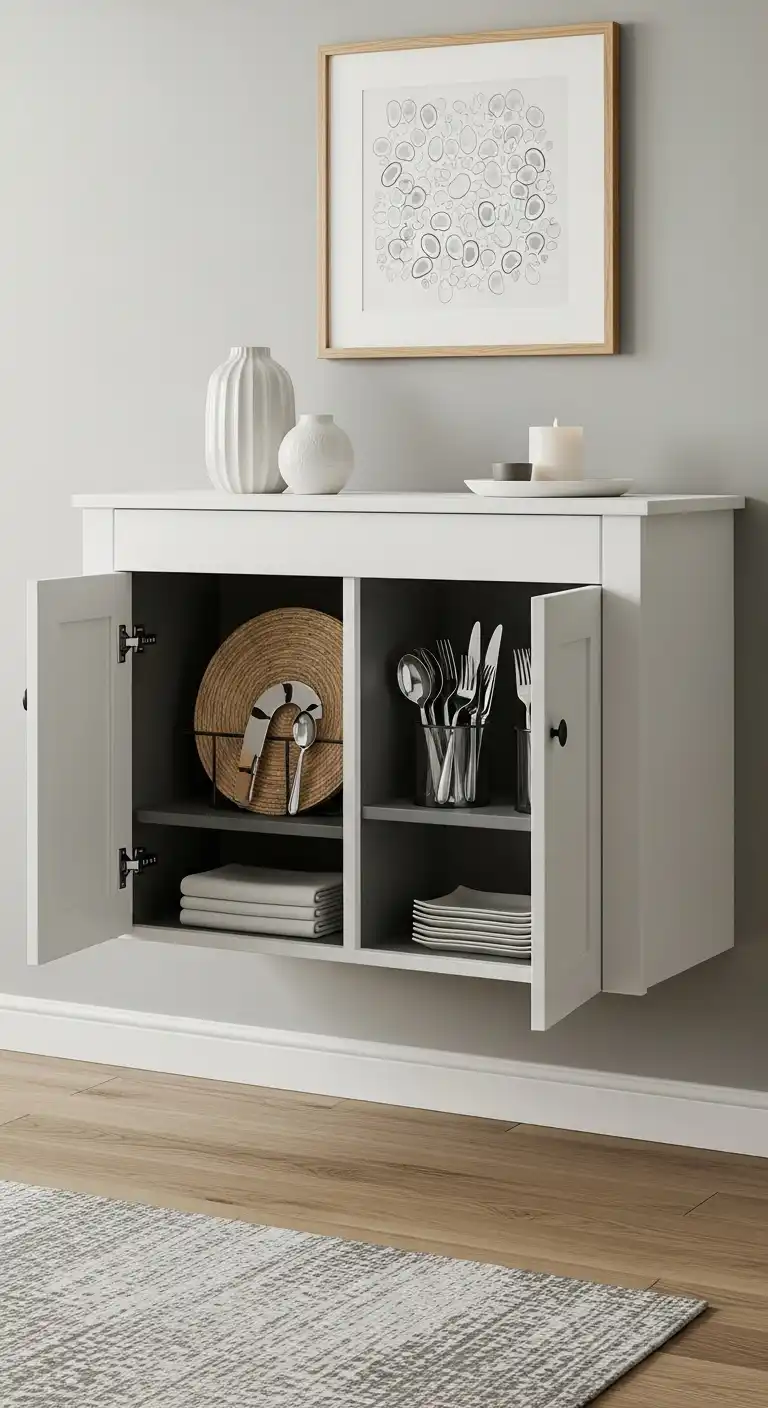
When floor space is limited, wall-mounted shelves come to the rescue.
I stack them above my dining area for plates, glassware, or even cute little plants.
It saves cabinet space and makes everything easy to grab.
Plus, styling the shelves with books, candles, or framed art adds personality.
It’s storage and decor all in one, which is a total win in a small apartment.
11) Play with Bold Accent Walls

Painting one wall in the dining area with a bold color or textured wallpaper changes the whole vibe.
I once tried a deep green accent wall behind my table, and suddenly it felt like a chic café corner.
Bold walls make a big impact, especially when the rest of the room is neutral.
It’s a fun way to add character without overwhelming the space.
12) Bring in Greenery for a Fresh Touch
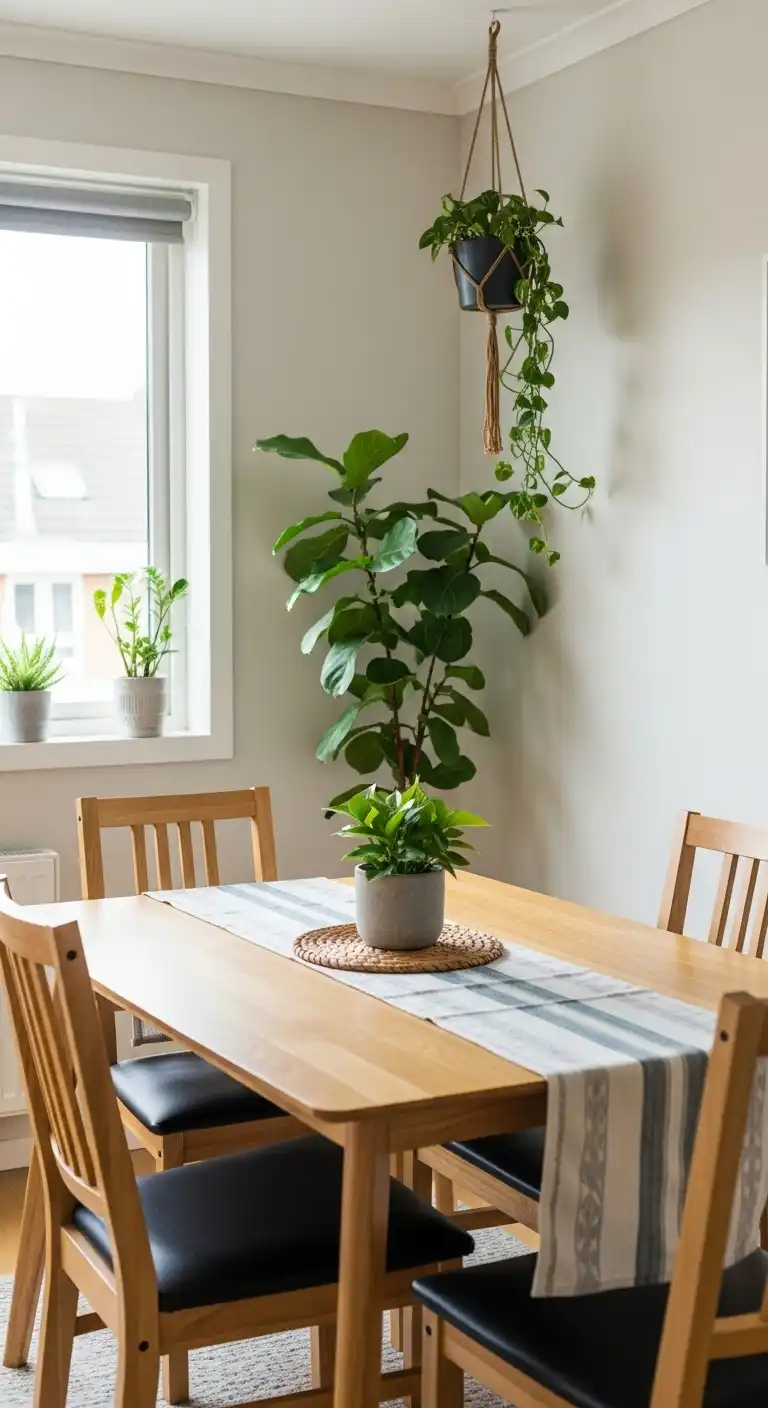
Plants make any dining area feel alive and welcoming.
I like placing a medium-sized plant in a corner or a small potted one as a centerpiece.
Christmas & Year-End Deals On Amazon !
Don’t miss out on the best discounts and top-rated products available right now!
*As an Amazon Associate, I earn from qualifying purchases.
Even a hanging plant near the table can brighten things up.
Bonus: some plants purify the air, so it’s both pretty and practical. It’s amazing how a little greenery instantly softens a small apartment dining room.
13) Use Transparent or Acrylic Furniture
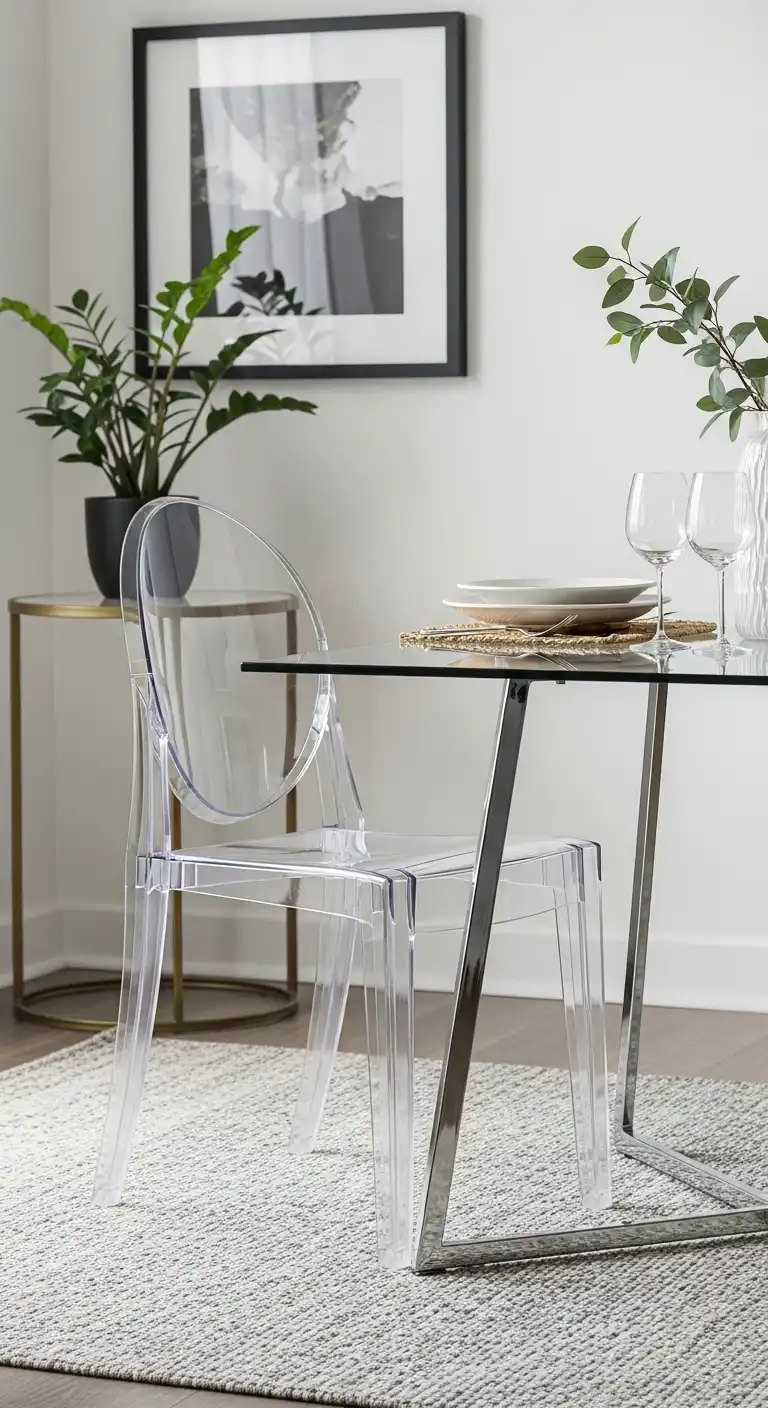
Transparent dining chairs or tables are a lifesaver for tiny apartments.
They take up zero visual space while still being functional.
I have a clear acrylic chair that fits seamlessly into my setup—like it’s not even there.
Pairing a glass or acrylic table with soft textiles (like a rug) keeps the space from looking too cold.
It’s modern, sleek, and feels light as air.
14) Add a Gallery Wall for Personality
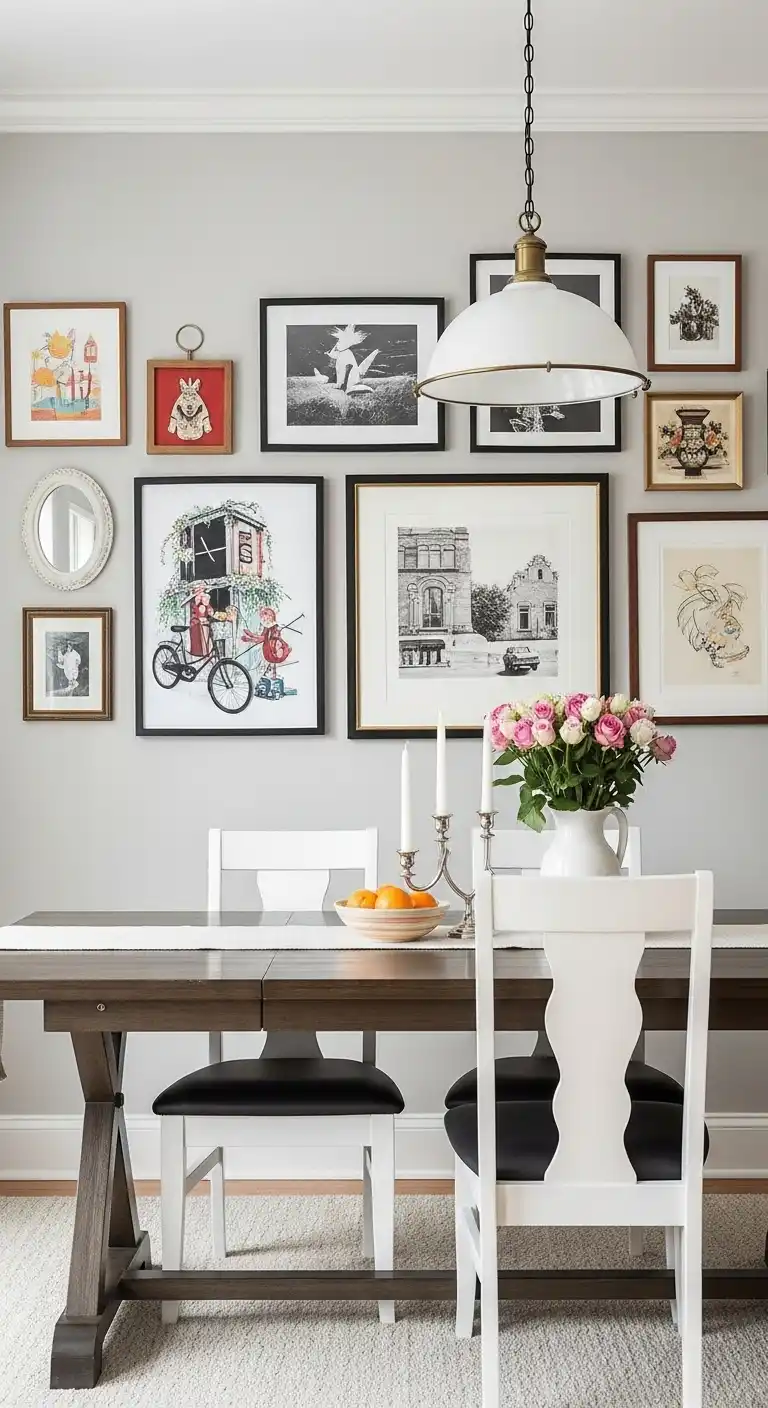
A gallery wall behind the dining table is such an easy way to add style.
I mix framed art, photos, and even quirky wall decor to make it feel personal.
The trick is keeping the frames in a similar color family for a cohesive look.
It’s like dining with your favorite memories and inspirations surrounding you.
Simple, affordable, and full of charm.
15) Opt for Compact Round Tables
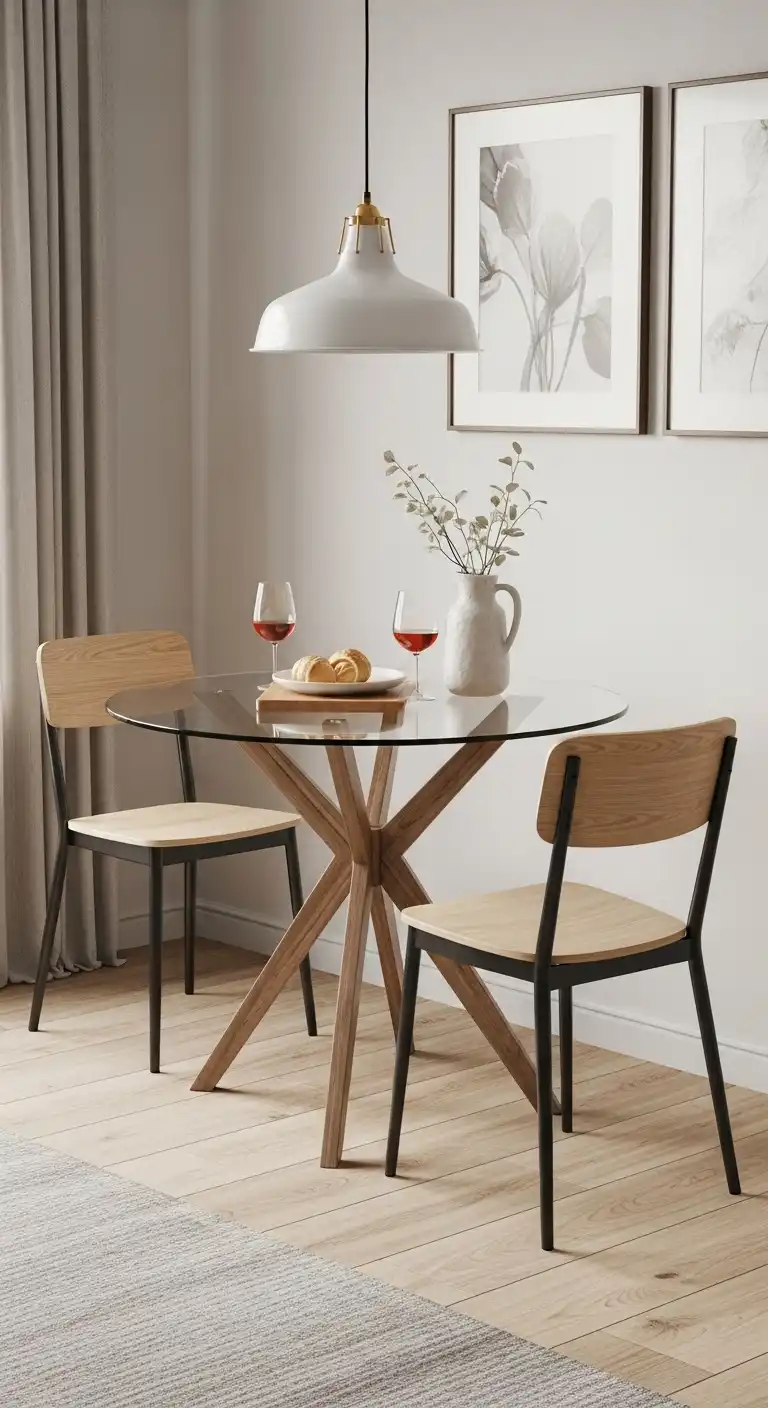
Round tables just work for small apartments.
They fit into corners or center spaces without those sharp edges getting in the way.
Christmas & Year-End Deals On Amazon !
Don’t miss out on the best discounts and top-rated products available right now!
*As an Amazon Associate, I earn from qualifying purchases.
I’ve noticed they create a more social, cozy vibe because everyone can see each other.
Whether wood, glass, or metal, a small round table instantly feels less cramped than a rectangular one.
Plus, it’s way easier to squeeze in an extra chair.
16) Mix and Match Dining Chairs
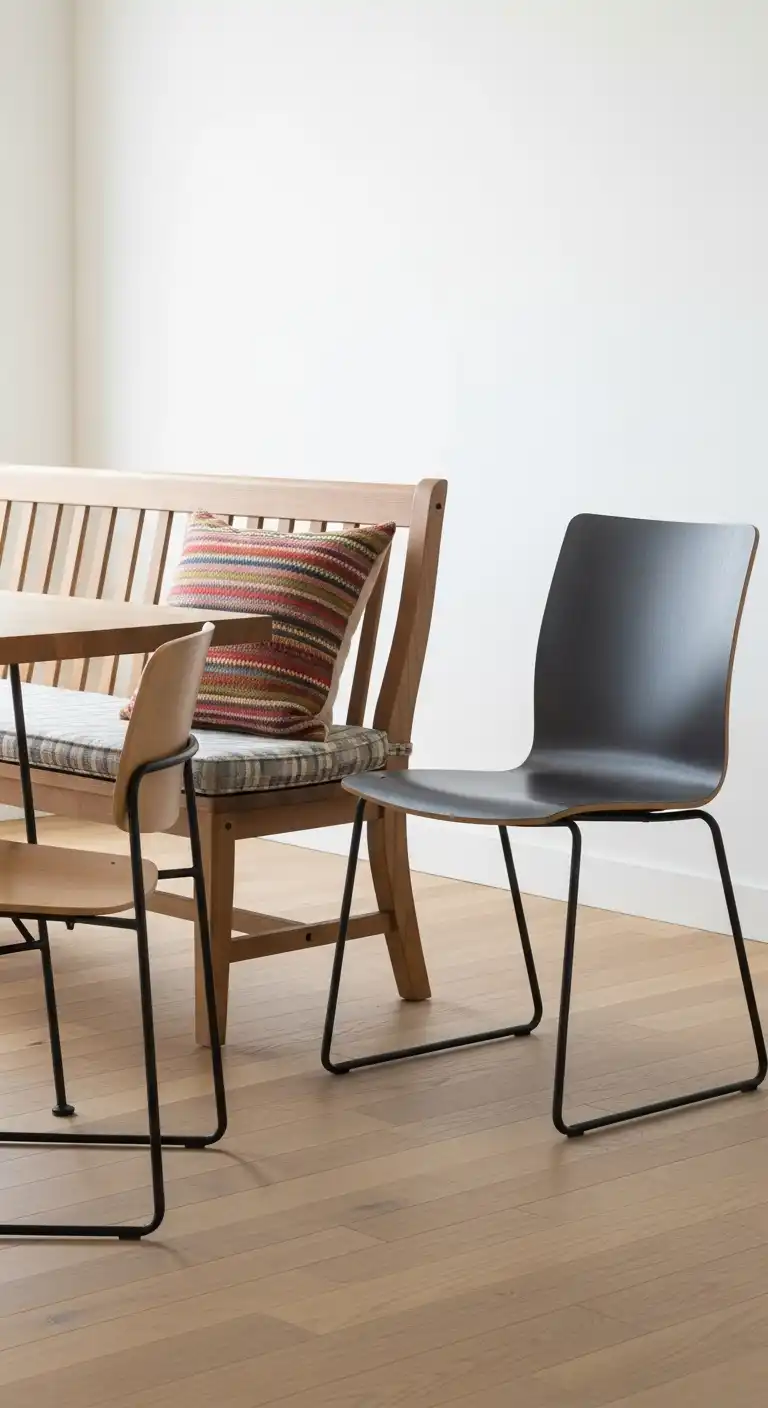
Matching chairs are overrated, IMO.
Mixing chair styles—like pairing a bench with modern side chairs—adds character and flexibility.
I love the collected, “effortlessly stylish” look it creates.
Sometimes I even throw in a colorful cushion for extra comfort and a pop of personality.
It’s budget-friendly too because you can pick up single chairs over time.
17) Install Floating Cabinets for Slim Storage

Floating cabinets or wall-mounted consoles are lifesavers when space is tight.
I use one to store placemats, cutlery, and even extra napkins.
Since it’s off the ground, the room feels more open and airy.
The top works as a small display area for a vase or candle.
Christmas & Year-End Deals On Amazon !
Don’t miss out on the best discounts and top-rated products available right now!
*As an Amazon Associate, I earn from qualifying purchases.
It’s like a sideboard but without hogging floor space—perfect for a small apartment.
Maximizing Small Apartment Dining Spaces
Creating a functional and stylish dining area in a small apartment requires smart planning and thoughtful design choices.
Here are some effective ways to maximize your dining space:
Space-Saving Furniture Tips
Choosing the right furniture is key to making the most of limited space.
Opt for multifunctional pieces such as foldable or extendable dining tables that can be adjusted based on your needs.
Round tables are also excellent for small areas because they allow for easier movement around the table without sharp corners.
Consider benches or stools that can be tucked under the table when not in use to free up floor space.
Additionally, furniture with built-in storage, like ottomans or sideboards, can help keep your dining area clutter-free while doubling as extra seating or serving surfaces.
Optimizing Traffic Flow
Maintaining smooth traffic flow in a compact dining area is crucial to avoid a cramped feel.
Position your dining furniture so it doesn’t obstruct natural walkways or doorways.
Avoid overcrowding the space with too many pieces; instead, focus on essentials that provide comfort without sacrificing mobility.
Using slim-profile chairs and tables can also help keep pathways clear.
Christmas & Year-End Deals On Amazon !
Don’t miss out on the best discounts and top-rated products available right now!
*As an Amazon Associate, I earn from qualifying purchases.
Arranging furniture parallel to walls or corners can open up the central area, making the room feel more spacious and inviting.
Flexible Layout Ideas
Flexibility in layout allows your dining space to adapt to different occasions.
Consider setups that can easily transform from everyday dining to entertaining guests.
For example, wall-mounted fold-down tables or drop-leaf tables can be tucked away when not in use, freeing up space for other activities.
Movable seating like lightweight chairs or stools can be rearranged as needed.
If your apartment has an open-plan design, use rugs or lighting to visually separate the dining area while keeping it flexible and cohesive with adjoining spaces.
Enhancing Dining Room Ambiance
The ambiance of your dining area affects the overall dining experience.
Even in a small apartment, you can create a warm, inviting atmosphere with the right elements.
Lighting Strategies for Apartments
Lighting plays a critical role in setting the mood and defining the dining space.
Use layered lighting, combining overhead fixtures with task and accent lighting.
Pendant lights or chandeliers hung above the dining table can create a focal point and add elegance.
If ceiling height is limited, consider wall sconces or table lamps to provide soft, ambient light.
Utilizing dimmers allows you to adjust brightness according to the occasion, from bright and lively to cozy and intimate.
Incorporating Art and Decor
Art and decor personalize your dining area and enhance its visual appeal.
Hang artwork or mirrors on walls to add character and create a sense of depth, which can make the space feel larger.
Choose decor that complements your furniture style and color scheme without overwhelming the room.
Small plants or fresh flowers on the table add a natural touch and a pop of color.
Decorative items like stylish placemats, table runners, or unique centerpieces can also elevate the dining experience without taking up much space.
Color Palette Recommendations
Selecting the right color palette can visually expand your dining area and create a harmonious environment.
Light and neutral tones such as whites, creams, and soft grays reflect light and make the space feel airy and open.
Incorporate accent colors through accessories, textiles, or a feature wall to add interest and warmth.
For a cozy and inviting atmosphere, consider warm hues like muted yellows, soft terracottas, or gentle blues.
Balancing light colors with a few darker elements can ground the room and add depth without making it feel cramped.



